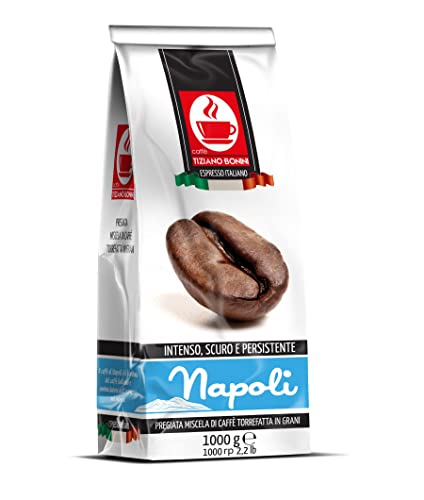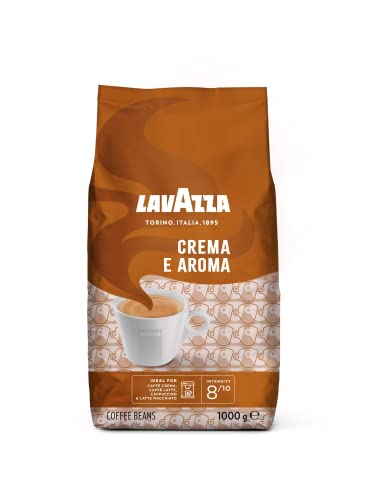Why Buy Whole Coffee Beans in 1kg Bags?
 A kilogram of coffee beans will make about 142 single-serve cups. This assumes there are no spills or waste.
A kilogram of coffee beans will make about 142 single-serve cups. This assumes there are no spills or waste.
A tablespoon of beans in their whole form has about seven grams. When they are ground, however, a tablespoon can contain more or less. This is due to differences in the size and density.
Cost
As more coffee drinkers recognize the value of making a delicious cup of joe at home, they are paying attention to their coffee beans. The purchase of fresh, whole quality coffee beans in bags weighing 1kg is a wise investment for your taste buds as well as your wallet. 1kg coffee beans uk of beans can make from 55 to 100 cups of coffee depending on how strong you like your brew.
The cost of a kilo of coffee beans is influenced by various factors, including transport and processing costs. These costs, which might appear to be small at first, can quickly add up and have a significant effect on the cost of coffee beans. The cost of a kilogram of coffee beans could increase when the roasting process is interrupted or if the quality of the beans is not satisfactory.
Besides these costs aside from these, there are many other indirect expenses that coffee farmers must take into consideration when creating their budgets for their harvests. These expenses include export taxes, the contribucion-cafetera tax charged by FNC, and port fees. Some importers charge management and administrative fees that can be shockingly high.
The cost of roasting coffee is another factor that could affect the price of a kilo of coffee beans. Retail prices for coffee beans are based on green coffee prices and can fluctuate greatly. The price of green coffee is dependent on the region and country in which it is produced.
 When determining the cost of a 1 kg coffee beans of coffee beans, you must also take into account the coffee waste that is generated during roasting or processing. For instance, coffee waste that is generated by the grinder’s plates can reduce the weight of the beans. This makes the final calculation of how many servings a kilogram of coffee beans will produce more precise.
When determining the cost of a 1 kg coffee beans of coffee beans, you must also take into account the coffee waste that is generated during roasting or processing. For instance, coffee waste that is generated by the grinder’s plates can reduce the weight of the beans. This makes the final calculation of how many servings a kilogram of coffee beans will produce more precise.
Additionally, the type of roasting process is important to determine how many cups of coffee a kilogram of beans will yield. A light roast produces a delicate and sweet flavor while a dark roast has a more intense and fruity taste. The amount of coffee that can be produced by a kilo coffee beans will also depend on the type of the method of brewing, such as espresso or filter.
Environment
The environment impacts the production of coffee beans, and a number of environmental issues are associated with this beverage. Deforestation and water pollution and soil erosion are some of the environmental issues. Certain large coffee companies have taken steps to reduce their environmental impact, but there’s still plenty of work to be completed. This involves encouraging sustainable farming practices and offering financial support for initiatives that help preserve the environment.
Numerous studies have studied the impact of climate changes on the production of coffee. They have discovered that the climate can have a significant impact on the quality and yield of coffee beans. However, the effect of climate change on the production of coffee is contingent on the type of farm and the methods employed to cultivate the land. The beans that are grown by farmers who are shaded have a greater aroma, acidity, and typicity compared to those that are grown in the sun. Additionally, the beans produced by farmers that use Agroforestry techniques have more flavor, aroma, and acidity than the beans grown in monocultures.
Another major issue is the excessive use of chemicals in the coffee industry. In addition to the negative effects of these chemicals on humans and the environment, they also pollute water sources. This is especially relevant to non-organic coffee, which uses a lot of synthetic pesticides and fertilizers. The excess chemicals can be leaked into water and disrupt ecosystems. This can be harmful to humans and wildlife.
The high cost of producing coffee can also cause it to be unaffordable for many families. A lack of consistent rain can also have a negative effect on the harvest. The conditions for growing coffee are very specific and a lack rain can result in a lower yield.
In addition to these issues climate change is also expected to significantly impact the adequacy of land for coffee production. According to research, a significant decline in suitable land and a rise in unsuitable areas will occur in most of the main coffee-producing countries. This will lead to conflicts between coffee production and nature conservation. This will also decrease the quantity of ecosystem services offered by regions that grow coffee, such as the regulation and support services.
Experimentation
Coffee beans are a plethora of food that can be enjoyed in a variety of ways. The bitterness of coffee beans can be reduced by using the appropriate ingredients. They can be used to make coffee, or as a ingredient in baked goods. They can also be shaved into desserts to add texture and flavour. Coffee beans are an excellent source of antioxidants that can be utilized in a variety of recipes.
The flavor of coffee differs depending on the region in which it is grown, and its particular characteristics are affected by climate elevation, elevation, and soil quality. Additionally, the processing techniques employed to prepare the bean can alter the taste. For example, honey processed coffees tend to have a sweeter, fruitier taste than conventionally-processed coffees. These types of coffees are becoming popular with consumers. They also come at a lower price than traditional coffees. However, they are more difficult to cultivate and require a higher level of expertise from the farmer.
Coffee is high in phenolic compounds, which act as powerful antioxidants. The chlorogenic acids are among the most important phenolic compounds. These are produced by esterifying quinic acid as well as one or more trans-cinnamic acids. Coffee has been found to protect against and reduce oxidative damage, and to also reduce the production of inflammatory mediators.
Infusion is among the most well-known ways to prepare coffee. It is one of the most popular ways to prepare. There are many flavors you can try. These can be traditional flavors like chocolate or cinnamon to more exotic flavors like ginger, lemon and orange. Some of these flavors come from the beans, whereas others are added during roasting.
Another method to test the flavor of coffee is to brew it using various methods. You can experiment with a coarser ground to get a stronger coffee or make it stronger by brewing it at higher temperatures. These experiments can help you decide your preferred brewing style.
Another interesting experiment with coffee is to sprinkle the grounds over the soil of a potted plant to see how it affects its growth. Similar experiments have been conducted, and most of the time the plants that were given ground coffee had a faster growth rate than those that did not.
Taste
The flavor of coffee is an individual preference. To find the most delicious taste, try different grinds, brewing techniques and even mixing of beans. If you purchase by the kilo, you have more flexibility to experiment, which can result in a more enjoyable experience for your taste buds. In the long run it is more affordable, as buying in bulk can reduce the amount of packaging waste. The coffee grounds that are a by-product of your daily brew can be composted. The purchase of bulk quantities is a greener alternative.
If you’re new to the world of espresso, you’ll likely need to go through a number of 250g bags in order to get your extraction dialled in. This isn’t uncommon and is a crucial part of the learning curve. A purchase by the kilo will provide you enough beans to see you through this phase, and perhaps even to assist you in making the transition to other methods of brewing after you’ve learned the basics.
A kilo of kilo purchase is more economical than buying smaller bags as you’ll reduce the cost of packaging and delivery. The purchase of a kilo reduces the carbon footprint of your business since it requires fewer bags and less sealing valves and degassing valves than buying two or three 250g bags at each time. Less bags will also result in less waste at landfills.
Another benefit of buying by the kilo is that it lets you to try different roasts and flavors and can be a satisfying experience for coffee lovers. There are roasters and suppliers that offer discounts on larger purchases. Moreover, you can buy online and have freshly roasted beans delivered to your doorstep, which is ideal for busy people.
You can also opt for an option that includes the tamper mat, which allows you to achieve the precision and consistency that is required to create an excellent espresso shot. This tamper is made of sturdy materials and high-quality products. It is non-slip and reduces noise and ensures that you apply the right amount of pressure to the beans.


